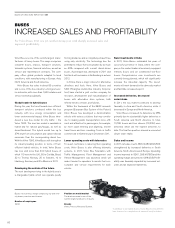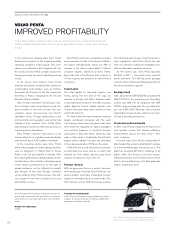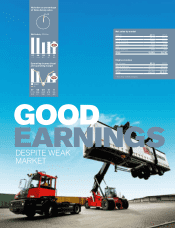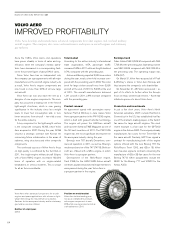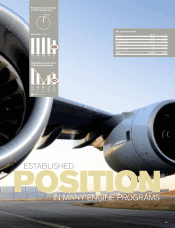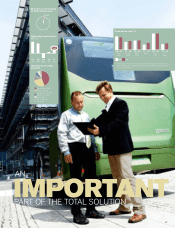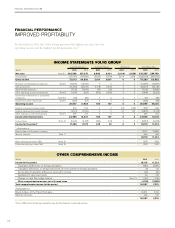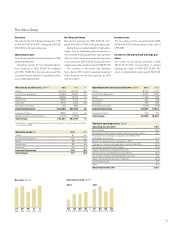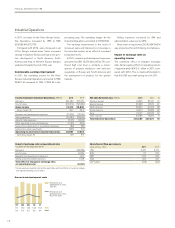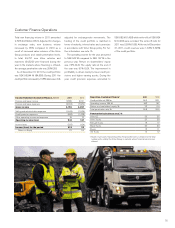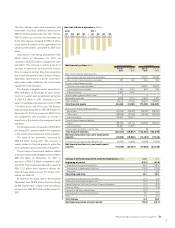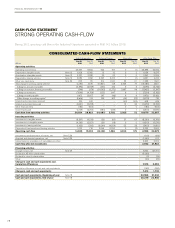Volvo 2011 Annual Report Download - page 72
Download and view the complete annual report
Please find page 72 of the 2011 Volvo annual report below. You can navigate through the pages in the report by either clicking on the pages listed below, or by using the keyword search tool below to find specific information within the annual report.
Volvo’s goal is a strong and stable
financial position
A long-term competitive market position requires
availability of capital to implement investments.
The financial strategy ensures that the
Group’s capital is used in the best possible man-
ner by:
• balancing shareholders’ expectations on favora-
ble returns with creditors’ demands for financial
stability
• strong and stable credit ratings
• diversified access to financing from the capital
markets
• margin in the balance sheet to cope with a
strong decline in the economy
• financing at competitive conditions to customers.
The goal concerning capital structure is defined
as the financial net debt for the Industrial Opera-
tions and it shall under normal circumstances be
below 40% of shareholders’ equity.
Volvo carefully monitors the trend of financial
key ratios to confirm that the financial position is
in line with the Group’s policy. The financial key
ratios include order intake as well as operational
and financial development.
The good demand for the Group’s products
continued in 2011 and has contributed to the
improvement of the Volvo Group’s profitability
and financial position. The financial net debt in
Industrial Operations declined during the year
from 37.4% of shareholders’ equity to 25.2%.
Volvo strives for strong, stable
credit ratings
The Volvo Group has continual meetings with
the credit rating agencies Moody’s and Standard
& Poor’s (S&P) to update them on the company’s
development. These meetings contribute to the
credit rating agencies’ ability to assess the
Group’s future ability to repay loans. A high long-
term credit rating provides access to additional
sources of financing and lower borrowing costs.
In April, 2011, S&P changed Volvo’s credit rat-
ing from BBB-/Baa3 with stable outlook to
BBB/Baa2 with stable outlook. The change
was attributable to a change in Volvo’s credit
measurement.
Moody’s rating of Volvo is BBB/Baa2 with
stable outlook since July 24, 2009.
Funding
Volvo works actively for a good balance between
short and long-term loans, as well as borrowing
preparedness in the form of credit facilities, to
satisfy the Volvo Group’s long-term financing
needs.
At the end of 2011, the Group had the equiva-
lent of SEK 37.2 billion in cash and cash equiva-
lents and short-term investments. In addition,
the Group had SEK 33.4 billion in granted but
unutilized credit facilities.
The purpose of Volvo’s long-term financial strategy is to ensure the best use of Group resources in
providing shareholders with a favorable return and offering creditors financial stability.
Credit rating at February 6, 2012
Short-term Long-term
Moody’s P-2 Baa2 stable
Standard & Poor's A2 BBB stable
DBRS (Canada) R-2 (high) –
R&I (Japan) a-1 A- positive
FINANCIAL STRATEGY
BALANCING GOOD RETURNS AND
FINANCIAL STABILITY
BOARD OF DIRECTORS’ REPORT 2011
68




